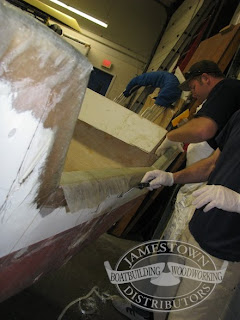
This article from Professional BoatBuilder has excellent ideas on designing bulletproof stringers and bulkheads that will last. It talks about the issue of limber holes, those passages through bulkheads and structural components to drain water to the lowest part of the bilge. "The Humble Limber Hole" by Bruce Pfund TJ and I plan to take a few pages from Bruce's book on the new stringers we'll be installing. Check it out.


























